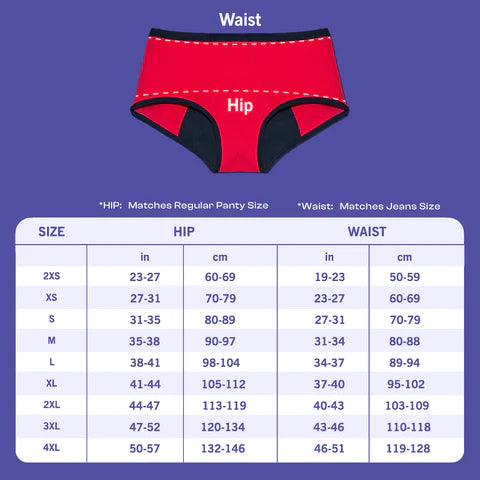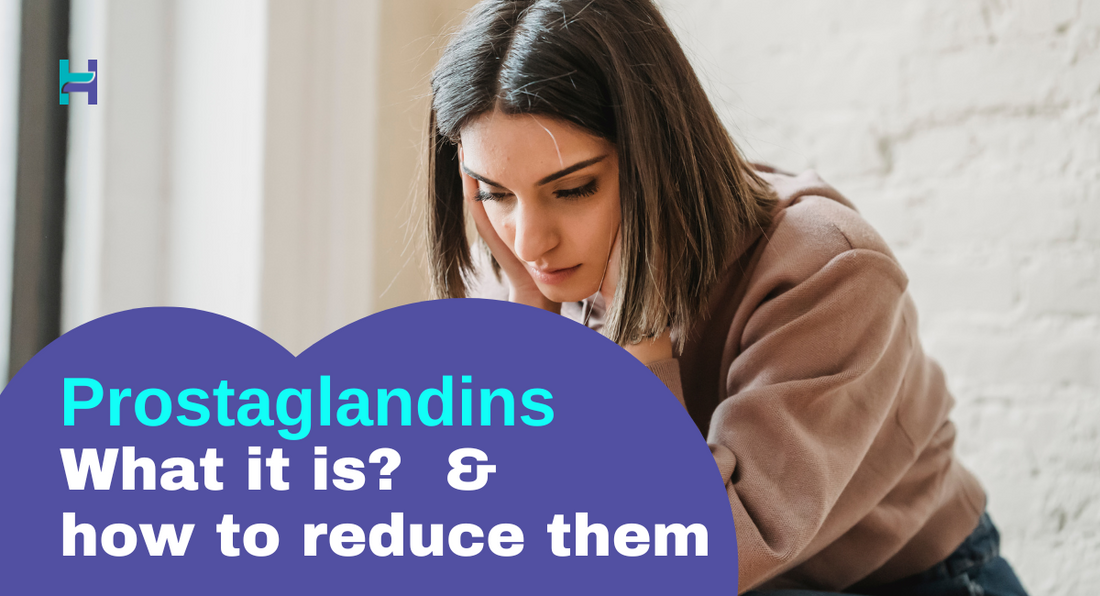Key Takeaways:
- High prostaglandins cause intense cramps, nausea, and other period symptoms
- You can reduce them naturally through diet, exercise, and stress management
- Anti-inflammatory foods and omega-3s are especially helpful
- Track your symptoms to understand what works for your body
- Consistent lifestyle changes offer long-term relief
You know your period is coming when the cramps creep in, your mood shifts, and suddenly, everything feels harder, and yes, we literally mean it.
But what if the pain isn’t just normal?
What if high prostaglandins are the real reason behind your intense cramps?
As women, we’ve often been told to just deal with it. But we believe we deserve more than that. In this blog, we’ll show you how to reduce prostaglandins naturally, with proven food choices, simple habits, and some helpful tips.
What are prostaglandins
Prostaglandins are hormone-like chemicals in your body. They control inflammation, pain, and muscle contractions. During periods, they help the uterus contract to shed its lining. This hormone like chemicals is made in the tissues, not in glands like other hormones. Too much prostaglandin can cause strong cramps and discomfort.
What causes high levels of prostaglandins during period
Your body produces prostaglandins in the uterus lining. Their main job is to help shed that lining during menstruation. But when levels rise too high, they increase the intensity of contractions. This leads to strong cramps, nausea, headaches, and even loose stools.
Here are a few factors can increase the levels of prostaglandins:
- Hormonal imbalance (especially high estrogen)
- Too much of omega-6 fats in your diet
- Chronic inflammation
- Lack of physical activity (like Yoga, Brisk walking etc.)
- Stress
High prostaglandins symptoms
Not sure if your body is producing too much? Here are the 5 common signs:
- Sharp, throbbing period cramps
- Lower back pain that starts on Day 1
- Loose stools or diarrhoea during periods
- Headaches or migraines
- Nausea or vomiting with cramps
These symptoms show your body is reacting strongly to the hormone spike at the start of your period. You feel intense cramps because the prostaglandins make the uterus contract harder. In addition to that, you often feel pain in the back because, the nerves in your pelvis connect to your lower spine. Occasionally, loose stools may occur during periods as these chemicals also affect your digestive muscles within your body.
How to lower prostaglandins naturally
You can take steps that help your body regulate prostaglandins better. Here's what you may try:
1. Use heating pad or warm water bag
This always works. You should use a heating pad or warm water bag on your lower abdomen. This relaxes the muscles and improves blood flow, which reduces pain.
2. Stay active
Exercise reduces prostaglandin production. Even light walking or yoga can help let go your cramps.
3. Get enough sleep
Poor sleep increases inflammation. Make sure you sleep 7 to 8 hours daily, especially before and during your period.
4. Avoid Smoking and limit alcohol
Smoking and alcohol: they both increase inflammation and worsen period pain. You should quit smoking and keep alcohol to a minimum. If you really want to know, whether you should drink during your periods or not, read our comprehensive blog on beer during periods.

Say goodbye to Period Discomfort
Make your periods worry-free with ultra-absorbent, reusable GoPadFree™ period panties. Get them today!!
Shop NowFoods that lower prostaglandins
Your diet plays a direct role. Some foods increase prostaglandins; others help lower them.
These food decreases prostaglandins
- Omega-3 rich foods: flaxseeds, walnuts, fatty fish
- Magnesium-rich foods: spinach, dark chocolate, almonds
- Anti-inflammatory spices: turmeric, ginger
- Fruits and vegetables: especially berries, leafy greens, carrots
- Green tea: rich in antioxidants that help lower inflammation
And, try to avoid these foods
- Fried and processed foods
- Excessive red meat
- Sugary snacks and sodas
- Too much caffeine
A 2023 meta‑analysis in Nutrition & Dietetics showed omega‑3 fatty acids reduced dysmenorrhea pain significantly. Another article from UPMC stated that diets rich in anti‑inflammatory foods such as omega‑3s, leafy greens, colourful fruits, and curcumin help ease period pain by reducing inflammation
Quick tips to reduce prostaglandins naturally
Beyond quick fixes, building long-term habits keeps prostaglandin levels in check.
1. Manage your stress level
Chronic stress increases cortisol, which disrupts hormones and worsens cramps. Practice breathing exercises, meditation, or journaling. We have an article on best yoga during periods.
2. Start tracking your cycle
Use a period tracker to note when pain peaks and what helps. There are a lot of apps available online that can help women log symptoms easily.
3. Consult a doctor to balance your hormones
Work with a doctor, a gynaecologist or nutritionist if you suspect hormonal imbalance. Treating underlying issues like PCOS or estrogen dominance often helps reduce excess prostaglandins.
Concluding thoughts
This blog explained how to reduce prostaglandins naturally. You learned why high prostaglandins cause painful periods. We have also covered the symptoms you should not ignore and you are aware of what raises prostaglandin levels during periods. We have also discussed the best foods that help lower them. If you have any additional suggestions, or tips on how to reduce the prostaglandins, please let us know in the comments section below. We would love to hear your side of the story as well.
Frequently asked questions (FAQs)
Q. Do prostaglandins affect fertility?
Yes, prostaglandins can affect fertility. High levels may interfere with ovulation, fertilization, or embryo implantation. They can also cause inflammation in the uterus and fallopian tubes, making it harder to conceive.
Q. Which organ produces prostaglandins?
Many tissues in the body produce prostaglandins, but they are not stored in any organ. Instead, they are made on demand at the site where they are needed. The uterus, kidneys, brain, and immune cells commonly produce them.
Q. Does birth control reduce prostaglandins?
Yes, hormonal birth control can reduce prostaglandin production. It works by thinning the uterine lining, which leads to lower prostaglandin release during periods. This often results in lighter flow and less menstrual pain.
Q. What exercises reduce prostaglandins?
Low to moderate aerobic exercises help reduce prostaglandins. Activities like walking, swimming, cycling, or yoga increase blood flow and reduce inflammation. Exercise also triggers the release of endorphins, which block pain and counter prostaglandin effects.

